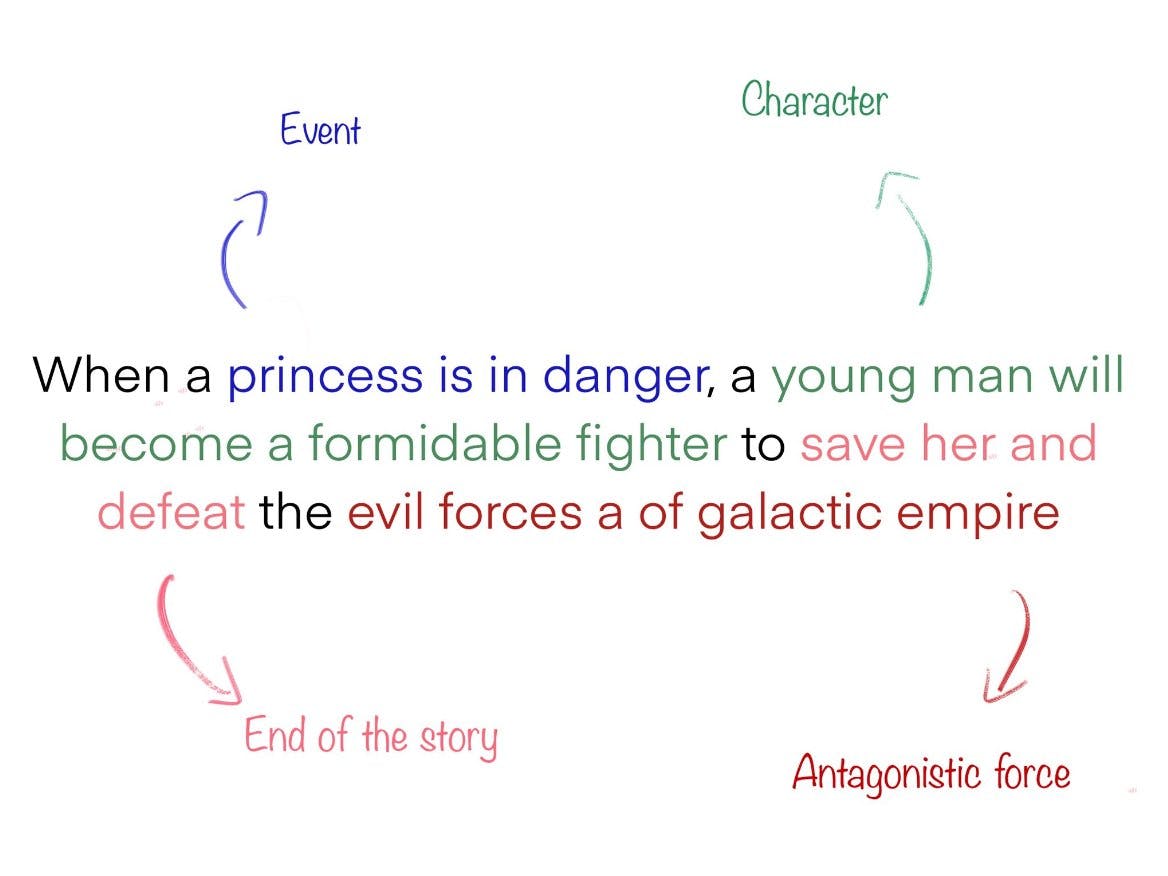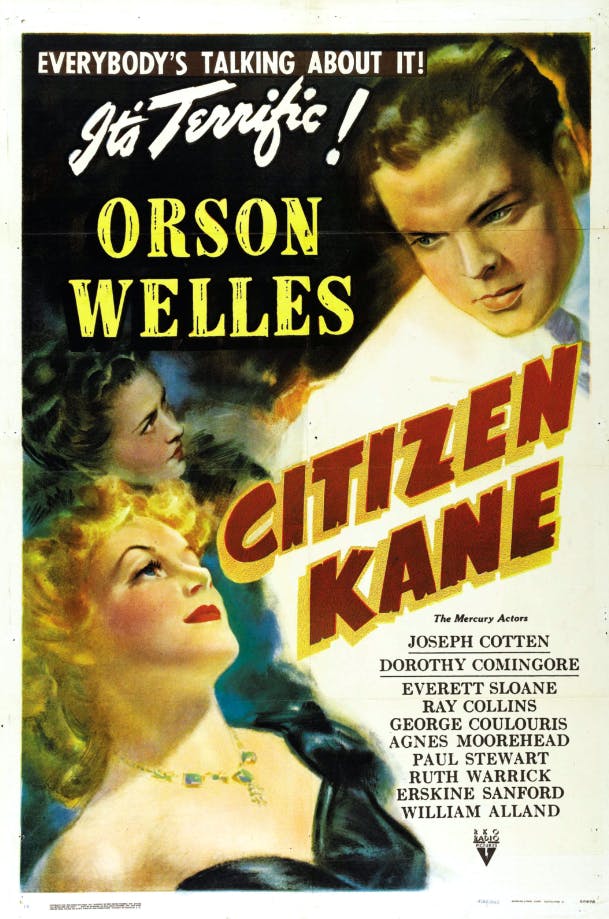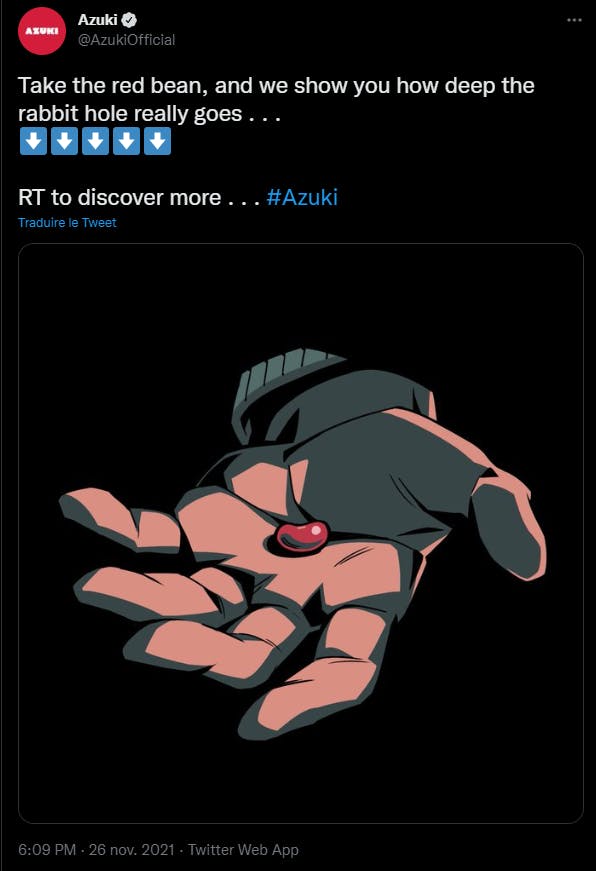Premise and Designing Principle - How to Apply Storytelling to Your Project, Part 1
In the previous article, Introduction to Storytelling, we saw what storytelling is, how you want your project to be perceived and what kind of story you want to tell — if you’ve not read it yet, I suggest you read it before this one, since this is the continuation.
In this article, we look at how to tell your story in an innovative and efficient way by exploring two concepts : the premise and the designing principle.
I. Premise
A premise is your story summarized in one sentence. It is composed by 3 elements :
- an important event
- your main character and an important trait about him or her
- the ending of your story, linked to the antagonistic force
As an example, here is the premise of a well-known movie, Star Wars :
"When a princess is in danger, a young man will become a formidable fighter to save her and defeat the evil forces of a galactic empire."
If we decompose :
- "When a princess is in danger" = an important event
- "a young man will become a formidable fighter" = your main character and an important trait about him
- "to save her and defeat the evil forces of a galactic empire" = the ending of your story, linked to the antagonistic force

As you noticed, this premise covers the entire first Star Wars trilogy, not just one episode. When you start writing a story, even if you are writing a saga, your premise should cover the entire story you are writing. Then you will write a premise for each movie or book in the saga.
Why should you write a premise ?
The premise will be your best asset in selling your story. If you can summarize an entire world and its history in one sentence, you have mastered the first concept that will make you a good storyteller.
Summarizing is really important. If you need a three-hour call to present your project and its story, no one will ever listen.
On the other hand, if you can present it in a few words and captivate people, they will be more likely to listen to you talk about your project for hours and let you go into detail. A good, compelling sentence is worth hundreds of pages to someone who is interested in your work.
This applies to all types of audiences, but especially to potential investors.
- Key point : your premise will be one of the major keys to market your story
In addition, being able to easily write the premise of a story you are writing often means that you have a good story. If you can't, it can mean one of two things: either you don't know how to write the premise, or your idea isn't very good.
Note: if you think your idea is good and the problem is that you don't know how to write a premise, there's no secret. Practice, look up examples of known story premises and practice again.
That's why writing your premise is one of the first steps to take once your story idea is clear enough.
- Key point : Explore all the possibilities your story has to offer by writing different premises, and choose the one you like best.
Let's create our own premise
Reminder : in each article of the series, there will be this part where I will create a lore for an imaginary project. Any resemblance with an existing project is coincidental.
In the previous article, I have laid the foundation of a fictive project : The Odyssey.
Here is its premise :
During his journey to web3, Kyou discovers a mysterious project led by Medusa, the Gorgon from Greek mythology. Kyou will have to raise web3 community to help him and lead them to the mint.
Before writing this premise, I had a lot more information about what I wanted for this story than just this one sentence. And when you write yours, you'll probably want specific elements in your story, like dialogue, an object, an outfit, a character's name, etc.
The most important thing is to remain flexible. You don't want to let a detail override the overall idea when you're only at this stage of development. If you are already trying to give importance to details, you will lock yourself into a bad position and ruin the basic idea of your story.
As a writer, I know that the desire to write a story can often come from wanting to use a specific detail, a detail that you cherish for a personal reason. It's a very good thing to add personal elements into your story.
However, as I said, this is not the time for details, but don't worry, an entire article will be done for the details and symbols of your story.
II. The Designing Principle
According to John Truby in his book The Anatomy of Story, the designing principle is an overall story strategy, "synthesizing idea" or "shaping cause" that comes organically from the story's premise, theme, and character, rather than from an external structure applied to the story. It is an internal logic, or mode of organization that allows your story to become "greather than the sum of its parts".
Or with simpler words : how you tell your story.
In my opinion, this is the essence of storytelling. We all have stories to tell, and so we all tell stories. But the difference between someone who is going to be boring, even if they can tell you what their trip to space was like, and someone who is able to captivate you by telling you how they fell down the stairs, is in their storytelling and how they tell their story.
Let's see an example of designing principle with a movie : Citizen Kane, directed by Orson Welles (1941).

Citizen Kane tells the story of Charles Foster Kane, a rich and mysterious character who dies in the first few minutes of the film. His last word is "Rosebud", but what can that mean?
Instead of using a simple flashback and showing us, the audience, Kane's entire life and telling us what "Rosebud" means at the end, Orson Welles decided to innovate.
Thus, just after Kane's death, journalist Jerry Thompson is given a mission: to find out what "Rosebud" means. We will not follow Kane through his life, but Jerry Thompson who will interview all those who knew Kane.
In this way, we will get to know Kane with Jerry, adding mysteries and secrets after each interview, until Jerry finally discovers what "Rosebud" means...
Through this design principle, Welles introduces many mysteries that we, as viewers, want to see Jerry solve and learn what happened. This is how Welles captivated us, but above all, how he sent his message : we can't really know someone else's life.
That is mostly why Orson Welles chose this specific designing principle, to realize this masterpiece and classic of cinema.
- Key point : find the designing principle that fits with the message and values you want to share through your project.
As far as storytelling is concerned, one of the web3 projects that uses it the best is by far Azuki.
So, naturally, they've used a designing principle to tell their story, and you know this one.
You read in Truby's definition of the design principle that, how you tell your story will depend on multiple factors such as the premise, theme and characters of your story.
Azuki's theme is not about manga as you might think from their art style, but it is about making you dive into web3, as if it were another world.
 (twitter.com/AzukiOfficial/status/1464280040..)
(twitter.com/AzukiOfficial/status/1464280040..)
The red bean and this drawing are strongly inspired by The Matrix (Watchowski Sisters, 1999), that also tell the story of a dive into another world. But The Matrix is also heavily inspired by another story, from which both Azuki and The Matrix use the designing principle : Alice in Wonderland.
Alice's rabbit hole being the red bean, Trinity being the White Rabbit (which is why Trinity has a white rabbit tattoo), etc.
By using a familiar designing principle to tell its story, Azuki makes it easy for us to understand its theme in one of her first messages: you are about to dive into a new world full of surprises.
- Key point : using a designing principle is not mandatory. But it will easily make the difference between a boring story, and a compelling story. Even if these stories are telling the same thing.
Now that you know what a designing principle is and how to use it..
Let's choose our designing principle
So Kyou, the main character, gathered a community and finally discovered who was at the origin of these bugs everywhere on web3: Medusa the Gorgon.
However, Medusa's goal is not clear and she seems to be a threat to web3. Kyou being the first person to reach her, she decided to give him a chance to stop her, or join her. Kyou will face a series of challenges, through which he will learn about Medusa's plan for web3. But Kyou will not be able to face these challenges alone, and the help of the community will be welcome.
Here I use the designing principle of The 12 Labors of Hercules (written by Peisander) for multiple reasons.
First of all, it is a well-known story, and therefore a well-known design principle. This will help people understand the project and its inspiration more easily.
Second, because The Odyssey is heavily inspired by Greek mythology (I will be using the character from that mythology), there is a logic and people can easily understand where I am going to take them.
Finally, this design principle allows me to create a real experience for the community through Kyou's challenges, which fits the message I want to share with this project.
To conclude..
Although Azuki and The Odyssey use existing designing principles, you don't have to. It's much more difficult, but you can try to create your own designing principle and tell your story in a very innovative way. I think web3 is a very good medium to explore new ways of telling a story.
However, you should be aware that a designing principle does not have to be mentioned in your story. In fact, most of your work as a writer/storyteller will not be clearly visible to your readers/community. But be sure they will internalize it and be able to tell the difference between your story and others.
And if you want to sell your story or market it for your project, don't fade the premise. This is the first, easiest and most important step to start building on a good idea.
Now that you know how to sell your story in one sentence and how to tell it in an innovative and efficient way, we'll look at how to share the message and values that are important to you through your project in the next part : The Morale Debate of Your Story - How to Apply Storytelling to Your Project, Part 2

